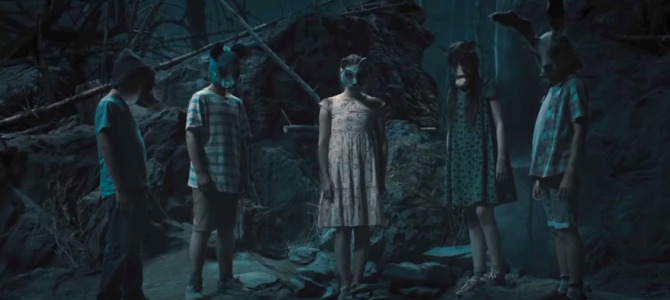Spoilers and horror themes ahead.
Like most successful horror writers, Stephen King has a strong stomach. Throughout his literary career, he has written about self-inflicted cannibalism, Satanic rapes, an ax chopping off a human leg, and anal rape with a tennis racket.
But the one matter he couldn’t stomach occurred in the novel “Pet Sematary.” By writing about the death of a child and its resurrection as a mean-spirited killer, King regretted the novel, feeling that he “went too far.” King only handed over the novel to fulfill his book contract.
The new cinematic adaption of the novel (the first adaption appeared in 1989 and was a feeble effort) doesn’t shy away from the child’s death. But unlike the novel where a very young boy died, directors Kevin Kolsch and Dennis Widmyer chose the older daughter to be the one resurrected into a hateful, remorseless killer.
“Sematary” has the finest actors thus far to star in a King adaption. Everyone in the film, from Jason Clarke (the agnostic father who escapes to rural Maine to get away from the rat race of the Boston medical community); Amy Seimetz (as Rachel, the wife who believes in a biblical afterlife); and a hulking and haunted John Lithgow (as the old resident who introduces Clarke to the life-giving Pet Sematary) are excellent.
But the one who steals the show is child actress Jete Laurence, who has the double duty of convincingly playing the sweet daughter Ellie one minute, then playing the child equivalent of a Manson girl. Without any CGI effects, which have become a staple of zombie movies, Laurence, with very little makeup, uses her eyes and voice to convey baleful, bottomless evil.
King has never been a “message” writer and, although a political liberal, has never hewed to political correctness (which may be why King has lasted so long). But the novel and the film, without slowing down the pace, touches on questions of the afterlife. They show that not all resurrections are like Christ’s. In life angelic, Ellie returns as demonic, psychologically torturing her family before trying to hack them to death.
Even the family cat, Church, returns not as his cuddly self but as a hissing monster. As with the scenes of the scalpel-wielding Ellie, Church gives the film its authentic chills. Yellow-eyed, fur matted, he exhibits hate and a burning desire to kill his human family.
The film’s other theme is that of guilt. Jason Clarke is haunted by his inability to save a decayed patient; and the patient appears, leading Clarke to Pet Sematary. His wife is haunted by the death of her spine-twisted sister, and blames her death on the one time Rachel didn’t go up to feed her. Her use of the dumbwaiter shaft to feed her dying sister comes back to haunt her. In one remarkable scene, the wife exhibits the same deformities as her sister while the sister uses the dumbwaiter shaft to scare Amy.
Like King, the filmmakers don’t belabor the point of the afterlife. On one hand, the film implies the dead should have been left alone for their souls to enter the afterlife. On the other, agnostics won’t be pleased that the dead can be brought back at all, or that demonic evil exists.
The filmmakers take liberties with the source material, especially the downbeat ending (which, incidentally, King approves of). They intuitively know that trying to please King’s often fanatical fan base does not spell big box office, since the fan base isn’t big enough to generate major revenue, and instead tailor the film for a less discriminating audience. In the process, they enhanced the horror.
The film is not perfect. At times it relies too much on “jump scares,” an unfortunate and clichéd tactic of most horror movies today. The film is at its most effective when Kolsch and Widmyer rely on a lurking atmosphere of horror.
The filmmakers should also be praised in their King-like ability to take things not considered horrific in a scary direction. Cats, children, and dumbwaiter shafts are used to chilling effect and will never be viewed the same way again.









